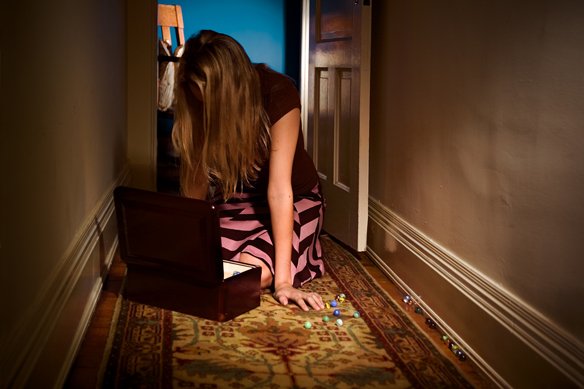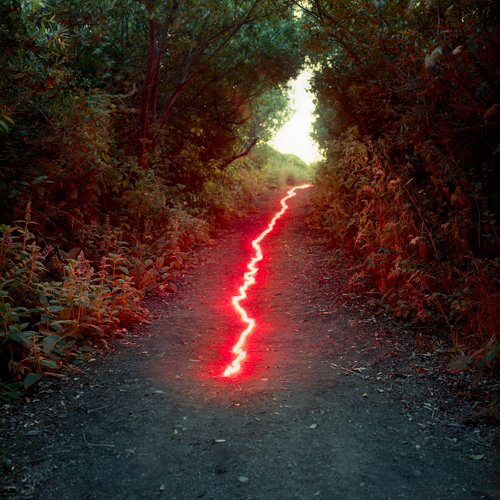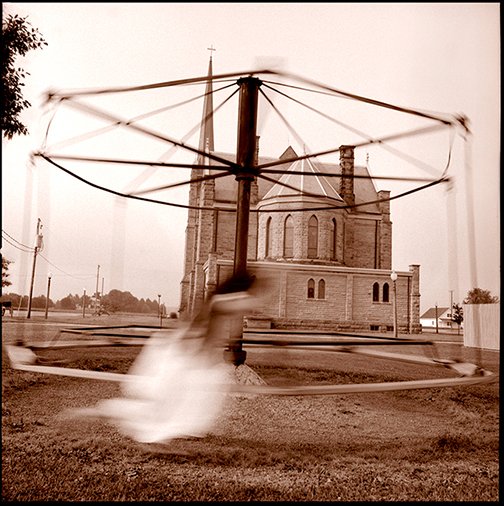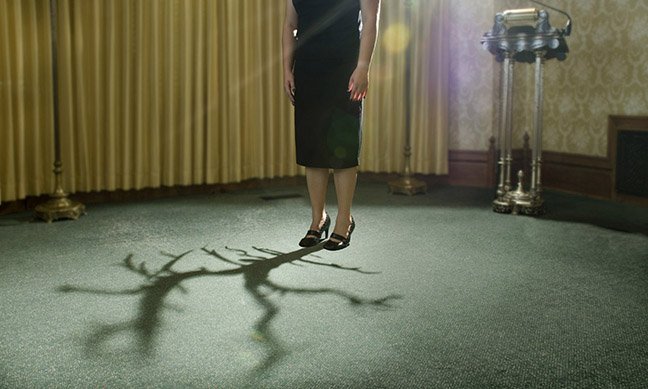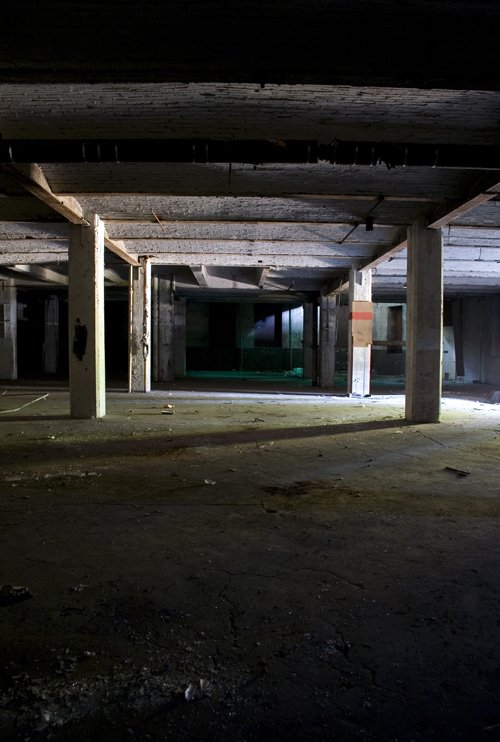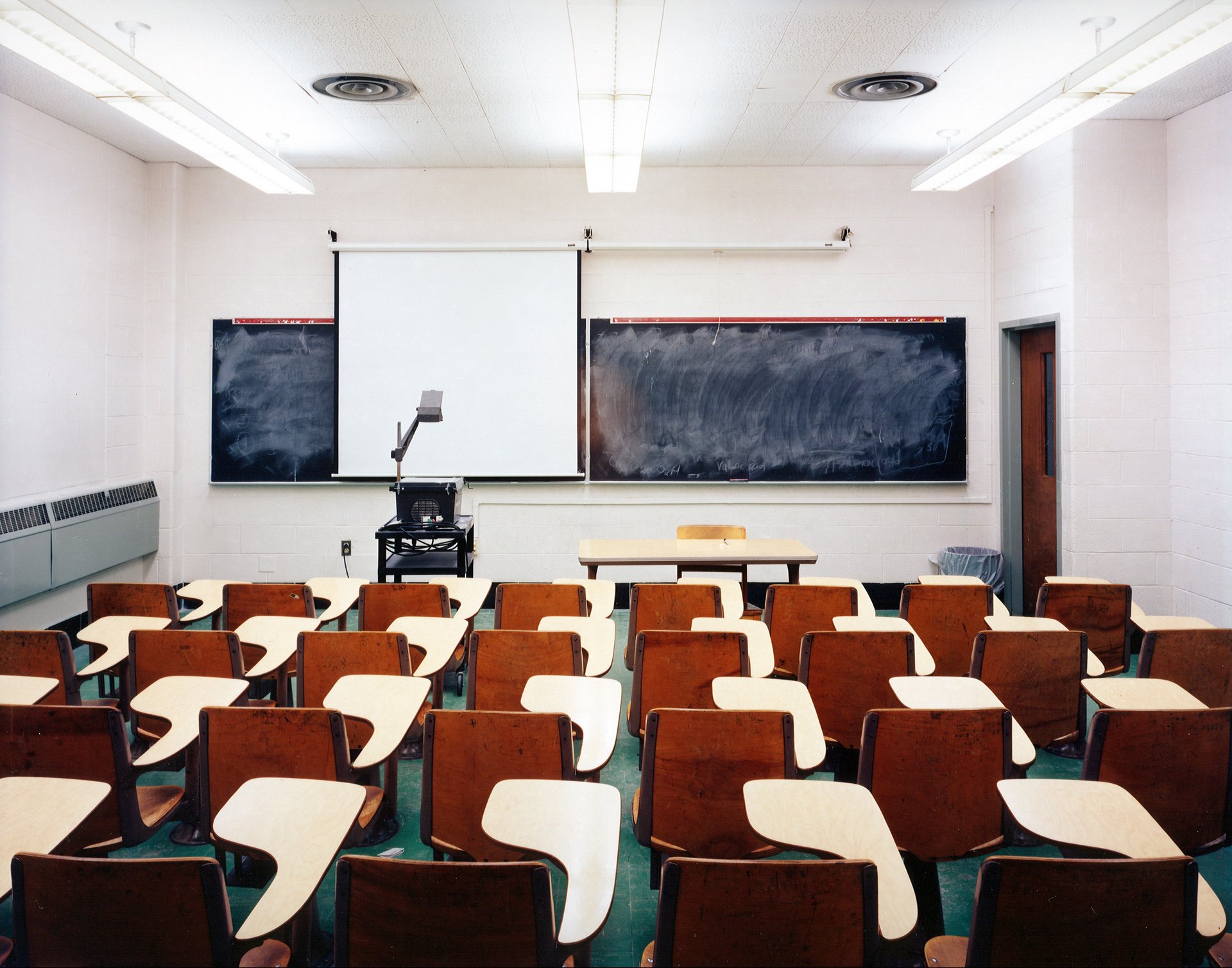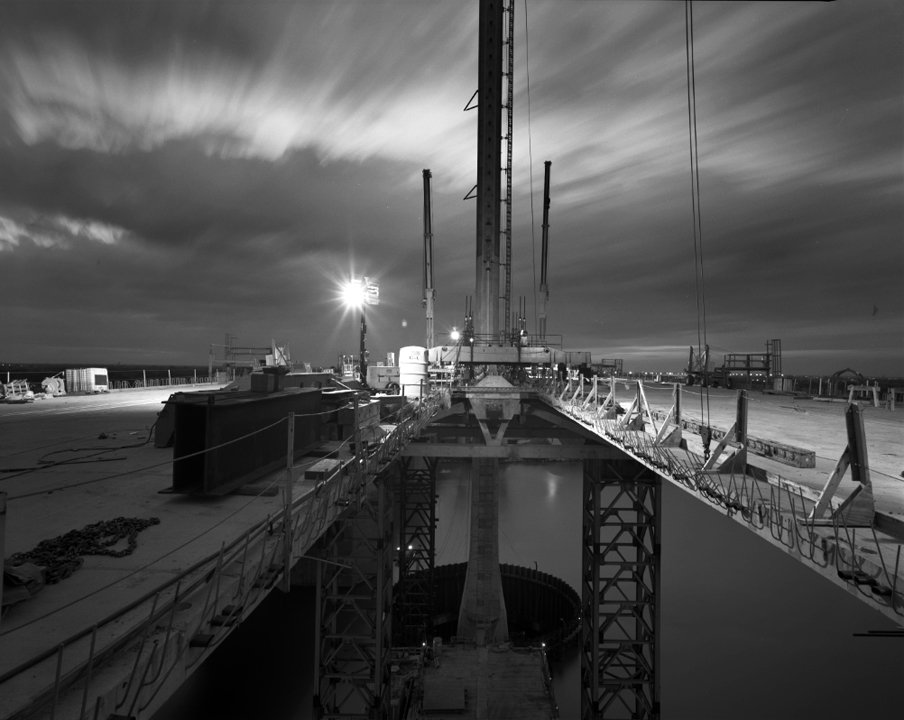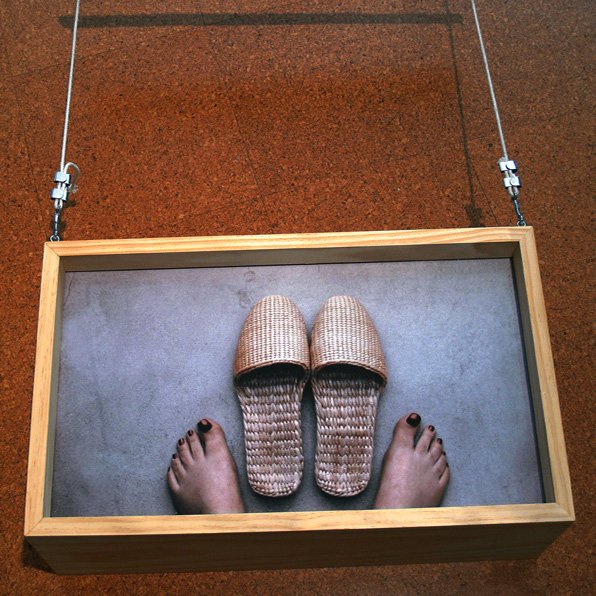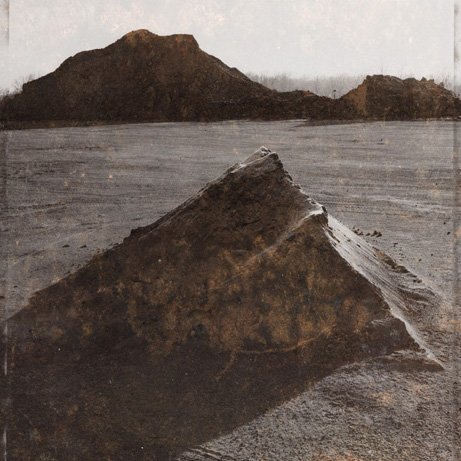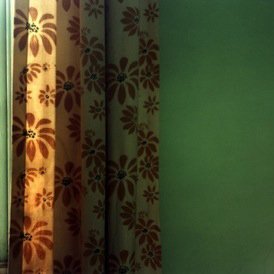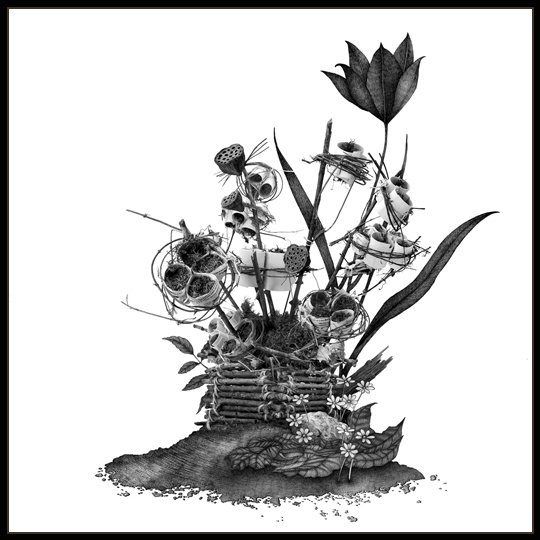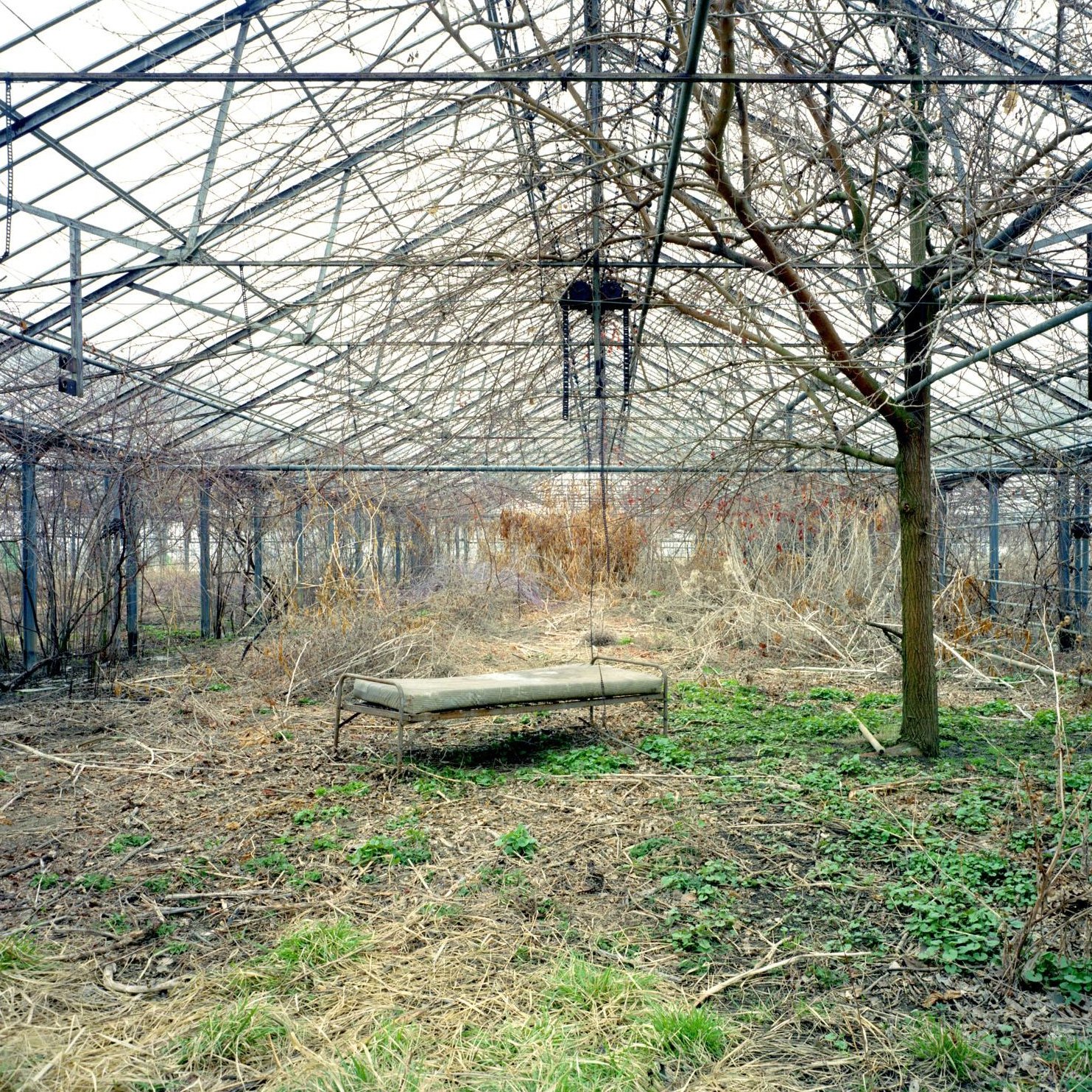Deep Space
Curated for the Ohio Arts Council’s Riffe Gallery, Columbus, Ohio
29 Jul - 17 Oct 2010
Featuring work by 14 contemporary photographic artists working in Ohio.
Images by (in order L to R first row): Allyson Klutenkamper, Barry Underwood, Bridget Murphy Milligan, Emily Hanako Momohara, Yvette van der Velde, Grant Fletcher, Lynn Whitney, (in order L to R second row): Rachel Girard Reisert, Benjamin Montague, Debra A. Davis, Jaime Kennedy and Kelly Urquhart, Jodi Boatman, Pipo Nguyen-duy
Curatorial Statement
This exhibition features contemporary Ohio fine art photographers whose images mobilize and manifest inventive constructions of space. From three-dimensional depths depicted with the camera’s perspectival authority, to spaces deeply inscribed with intellectual, emotional and aesthetic perceptions, the photographs negotiate distance and proximity.
Photography translates the three-dimensional world into a two-dimensional representation, but is well known for retaining the sensation of real space, volume, and vastness. It is this beloved quality, the perception of “being there” when observing the photograph’s window on the world, which these photographers use as a strategy of engagement. Immersing the observer in a place on the other side of the lens, they transport us through time, history and the proverbial looking glass.
Seeing might be the end result of believing. But hopefully, seeing is just the beginning of perception, questioning, and understanding the world. In any case, throughout the process the photograph delivers a certain connection via memory, experience, expectations, and trust. Deep Space plays with the double meaning of deep--one describing physical dimension, the other suggesting the thoughtful, the heartfelt, or an ample degree of involvement.
All of the artists in the exhibition incorporate spatial references, as well as layers of meaning attributed to pictorial qualities that are intellectual, mysterious, obscure, or profound in quality or feeling. Exploration, discovery and interpretation is the mission.
Grant Fletcher, Pipo Nguyen-duy, Yvette van der Velde, and Lynn Whitney photograph structures. The camera’s precisely located viewpoint organizes the parallel lines of built environments into a receding linear perspective. Figuratively and metaphorically, man becomes the measure of this order, a constriction of appearance that directs the gaze to the vanishing point. It seems to visualize the possibility of infinite motion, satisfying the brain with the sensation of being in the very center of this geometry. Perspective is a fulfilling deception, much like photography’s privileged association with truth. For everything it leaves out of the story, it makes up for with evidence and earmarks of the past, present, and future.
Bridget Murphy Milligan, Benjamin Montague, and Barry Underwood’s landscapes incorporate both nature and culture. They frame land as a place of radical activity, not of passive reflection. Encompassing the vista as both aesthetic phenomena and as theatrical stage, their work derives visual pleasure from the illusion of great distance. The human elements are at times poetic and mythological, but always vested in trying to come to terms with the interconnectedness of humans to humanized tracts of land.
Jodi Boatman, Debra A. Davis, Jaime Kennedy and Kelly Urquhart, Allyson Klutenkamper, Emily Hanako Momohara, and Rachel Girard Reisert’s works have spatial dimensions, but it is their liminal qualities that are abundant. The liminal state relates to a period of transition or sensory threshold, where boundaries or limitations become sketchy. It is the deep mental space from which emerge new perspectives.
Life’s experiences and the subtleties of objects are evoked through nearness. Closeness implicates our presence in the scene. Physical response is again inevitable, as we squeeze into the eye of the camera, zoomed in on a fraction of the house, the yard, or a narrow room dimly lit. Sometimes a cropped or shadowed figure shares our moment of confinement. Their camerawork invites shared consciousness, and validates that this is an ephemeral quality derived from embodied states.
Ultimately, photography is the illusion of authenticity, it conveys the intensity of complex experiences. Its thin surface of pigmented inks or silver halide become an irresistible immersion in something as yet unknown as the far reaches of our receding universe--the magnitude of the human mind. In these photographs we witness the dreams of man being built, and suffering disintegration. We occupy common ground with our imagination, completing the narrative and filling in the unseen. The photograph confounds mathematical and metaphysical limits to space and time. Our relationship to the “real” is changed now that the real is forever collapsing into the imagined.
